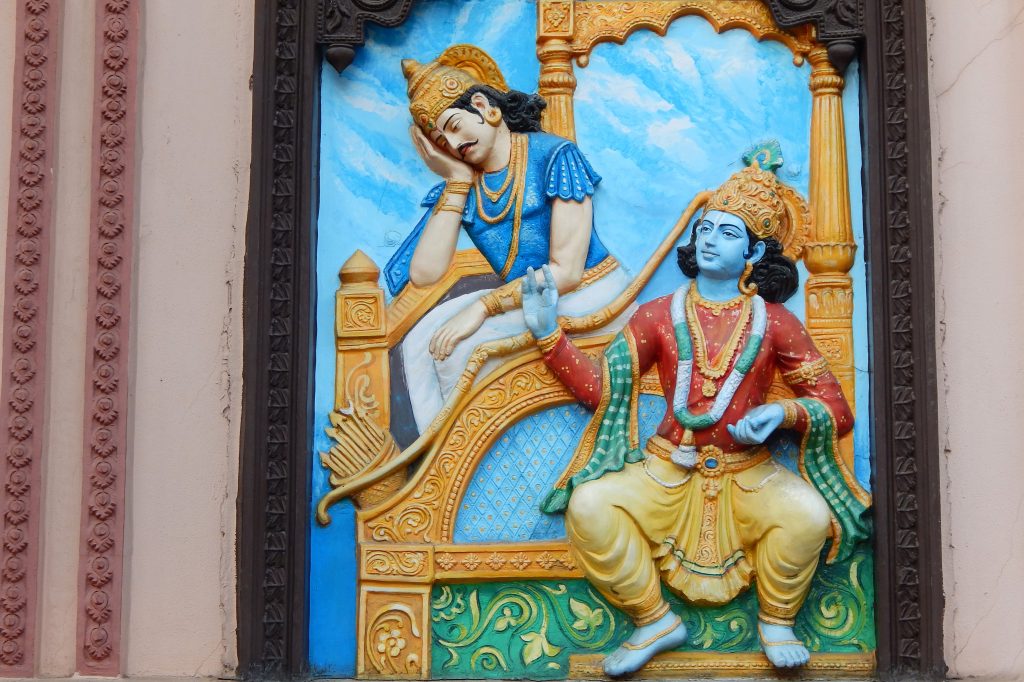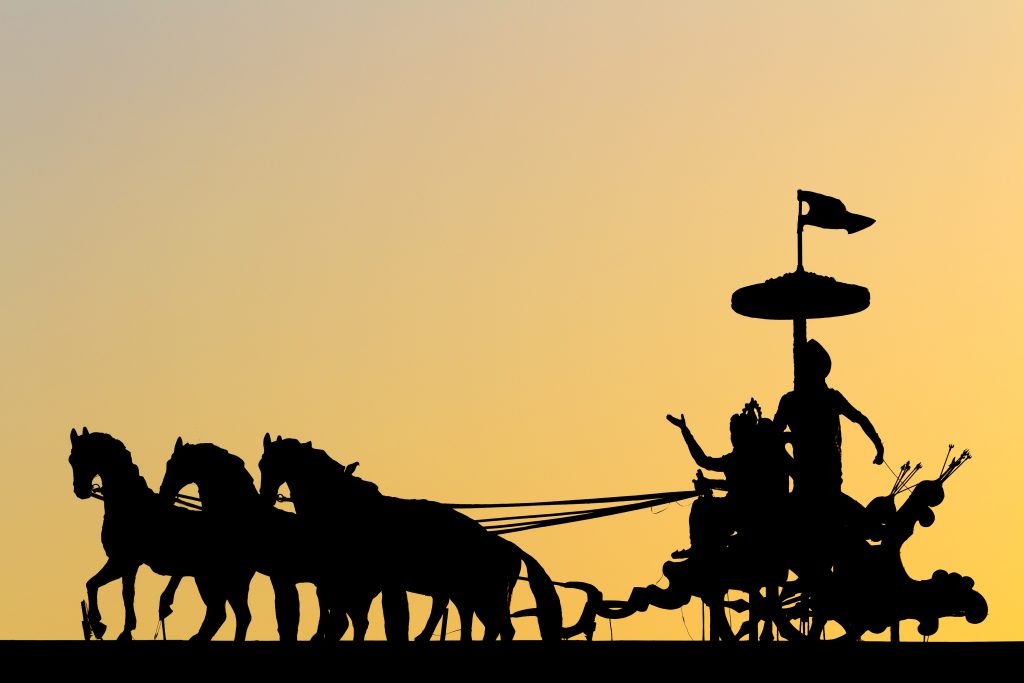
What is the Bhagavad Gita?
The Bhagavad Gita is widely considered as one of the most important religious texts of Hinduism, along with the Vedas and the Upanishads. It’s also one of the most widely read and translated texts in the world. The Gita is a part of the epic Mahabharata, which is one of the longest poems ever written. However, despite its popularity and significance; many people have little understanding about what exactly this book contains. This article explains everything you need to know about the Bhagavad Gita, so keep reading to learn more!
The Bhagavad Gita is one of the most significant texts in the world. It’s also one of the most important religious texts in Hinduism, along with the Vedas and the Upanishads. The Gita is a part of the epic Mahabharata, which is one of the longest poems ever written. It’s believed that the Gita was spoken around 5,000 years ago. The word “Bhagavad” translates to “the Bhagavad Gita” because it means “the song of the Lord.”
The Gita is a conversation between one of the most famous figures in Hinduism, Lord Krishna, and his friend Arjuna. In this conversation, Krishna teaches Arjuna about how to look at reality with an open heart and an open mind, and with what attitude one should operate in the world and perform their duty or work.
The Battle of Kurukshetra
Bhagavad Gita was spoken by Sri Krishna, to his friend Arjuna, on the battlefield at Kurukshetra. This took place after Krishna left Vrindavan. Arjuna, a Pandava, one of the 5 sons of Pandu, was a great ksatriya and warrior.
In the midst, of the Mahabharata, the Great History of Inida, the Bhagavad Gita is tucked in the middle of what could be considered some of the most extreme family drama one could ever imagine.
Before the battle begins, the conch shells are being sounded by the different participants who have come to fight this battle. Arjuna, requests his friend Krishna, who has agreed to drive Arjuna’s chariot in the battle, but not fight, to take him out into the field for a better view of the field.
Arjuna observes those who have come to fight. Seeing he is about to go to battle with his cousins, uncles, and teachers, he begins to question the reasons and motives behind being there. Arjuna begins to tremble and reveals his mind to his friend Sri Krishna.

Why is the Bhagavad Gita important?
The Bhagavad Gita is important because it’s one of the most influential texts in the Hindu religion. The Gita is also significant because it explains the nature of reality, who we are as human beings, and how the world works. The Gita also offers a path that anyone can follow to live a meaningful life.
The Bhagavad Gita describes 18 types of yoga, ways to connect with Divinity.
The Bhagavad Gita teaches that everyone has the potential to live a meaningful and purposeful life, regardless of their circumstances. The Gita also offers advice about how to cultivate a positive attitude towards life. The Gita is an example of what spirituality can look like in practice. It’s a guide on how to cultivate positive attitudes, while keeping the mind and heart focused on Bhagavan.
Who was the author of the Bhagavad Gita?
The author of the Bhagavad Gita is often debated among scholars. The most commonly accepted theory is that Vyasa wrote the Gita. Vyasa is one of the seven great sages in Hinduism, and he’s believed to be the author of the four Vedas. Vyasa is also believed to be the author of the Mahabharata, which means that he wrote the Gita as part of this epic poem. Some people believe that Vyasa wrote the Gita as a summary of the Vedas, which he had compiled in one book.
18 Yogas of Bhagavad Gita
An individual should act without thinking about the consequences, and one’s duties should be performed selflessly without receiving anything in return, according to the sacred text.
Bhakti yoga is one of the simplest types of yoga. This form of yoga emphasizes the connection between God and his followers and the power of devotion and love. This discipline encourages individuals to become one with the divine essence, which is God.
The Bhagavad Gita encourages people to seek ‘Jnana’ or knowledge in order to enlighten their lives. According to Jnana yoga, people should seek knowledge in order to enlighten their lives.
According to Bhagavad Gita, Karma Vairagya yoga instructs humans to select the path of action and self-sacrifice. The sacred text considers renunciation and karma as paths to liberation.
The path to the ultimate truth can be enlightened by Paramhamsa Vijnana or Vigyana yoga.
The Bhagavad Geeta, in the sixth chapter, emphasizes the significance of meditation through Dhyana yoga. It indicates that those who practice Dhyana yoga are able to concentrate more deeply.
Whenever a person’s mind is clouded by dilemmas, Visadh yoga is performed.
Logical reasoning and intellect are what makes Sankhya yoga, according to the sacred text, a yoga of analysis.
Through Raja Vidya yoga, an individual strives to please Para Brahman in order to gain secret knowledge. Raja Vidya yoga is also known as the king of sciences’ yoga.
Vibhuti Vistara yoga guides people to focus on the path of divinity by appreciating the endless riches of God.
The Bhagavad Gita says that one can obtain the omnipresent form of the supreme being by practicing Vishwaroopa Darshana yoga. Yoga through beholding the cosmic form of God is also referred to as Vishwaroopa Darshana yoga.
The Gita recommends that through this type of yoga, one should relinquish self-interest. This yoga connects the supreme being with nature, humanity, and intelligence.
Gunatraya Vibhaga yoga is a form of yoga that helps people to understand the material world by examining its three modes (Sattvic, Rajasic, and Tamasic). By understanding these three qualities (Sattvic, Rajasic, and Tamasic), people can then take part in yoga.
An individual learns about the infinite nature of the supreme being through Purushottama yoga, which is also known as supreme divine personality yoga.
According to Bhagavad Gita, one should learn the differences between evil and divine qualities, therefore Daivasura Sampad Vibhaga yoga assists in it.
The Para Brahman, according to the Aksara Parabrahman yoga, is immortal.
The Shraddhatraya Vibhaga yoga teaches a person about the nature of goodness, passion, and ignorance in life. In other words, a person should be conscious of his actions and thoughts.
The Moksha Upadesha yoga, the last and 18th form of yoga in the Gita, teaches a person to detach from worldly distractions and surrender to God.
Key Teachings in the Bhagavad Gita
There are many important teachings in the Bhagavad Gita, but some of the most significant ones are explained below.
- The Wheel of Samsara – The Gita begins by explaining the Wheel of Samsara, which is a visual representation of the cycle of life and death.
- The Three Gunas – The Gita also explains the three gunas, or qualities, that exist in everything. The three gunas are sattva, rajas, and tamas. Sattva is pure joy; rajas is pure passion; tamas is pure ignorance.
- The Five Paths of Yoga – The Gita also explores the five paths of yoga; which are the yamas, niyamas, asanas, pranayama, and dhyana or meditation.
- The Purpose of Life – The Gita also explores what the purpose of life is. The goal of life is to find peace and joy.
The Bhagavad Gita Today
The Bhagavad Gita has been read by millions of people around the world for centuries. People who practice the Hindu religion often study the Gita as part of their devotional practice. Many people who aren’t Hindu have also read the Gita and found it to be meaningful and helpful. There are also many people who study the Gita as part of a formal path of yoga.
They may look at the text as part of a class that’s held at a yoga studio, or they may study it on their own. There are also many people who read the Bhagavad Gita as part of their spiritual practice, even if they don’t identify with a certain religion. They may find that this text resonates with them and helps them cultivate positive attitudes and thoughts.
Conclusion
The Bhagavad Gita is a sacred text that offers insight into the nature of reality and what it means to live a meaningful life. The Gita is a conversation between Lord Krishna and Arjuna, and it explores what the purpose of life is, what the three gunas are, and five paths of yoga. The Gita is important because it’s one of the most influential texts in the Hindu religion, and it offers a path that anyone can follow to live a meaningful life.


